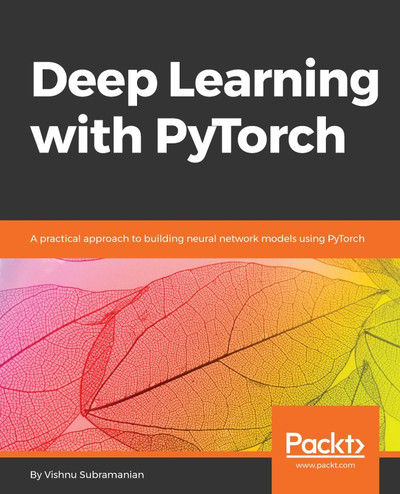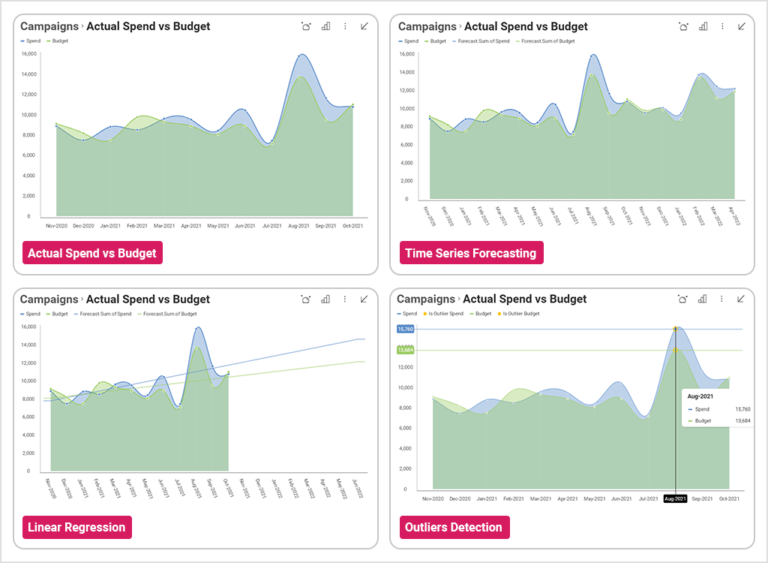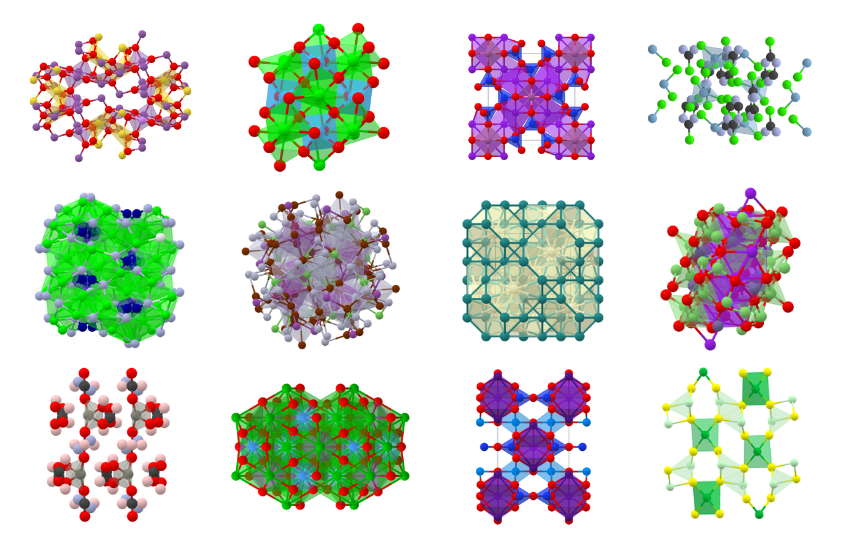
Building a Fake News Detector: A Practical Guide with Python and Machine Learning
Introduction: Combating Misinformation with Artificial Intelligence
In today’s hyper-connected world, the spread of misinformation, or “fake news,” poses a significant threat to informed public discourse. The velocity and volume at which information travels make it increasingly difficult for individuals to distinguish between credible journalism and deceptive content. This challenge has catalyzed a new frontier in artificial intelligence and data science: the automated detection of fake news. Major technology companies and research institutions are actively developing sophisticated machine learning models to identify and flag misleading articles. This effort is a cornerstone of modern AI development, with the latest Meta AI News and Google DeepMind News often highlighting breakthroughs in natural language understanding (NLU) that can be applied to this very problem.
For developers, data scientists, and AI enthusiasts, this presents a compelling opportunity to contribute to a meaningful cause while honing cutting-edge skills. Platforms like Kaggle provide the perfect battleground, offering rich datasets that allow practitioners to experiment, build, and benchmark their models. In this comprehensive guide, we will walk through the process of building a fake news detector from the ground up. We’ll start with fundamental text processing and a baseline model, then advance to state-of-the-art techniques using transformer architectures, drawing on tools and insights from across the AI ecosystem, including the latest Kaggle News and trends in MLOps.
Section 1: Foundations of Text Classification for News Verification
At its core, detecting fake news is a supervised machine learning problem, specifically a binary text classification task. The goal is to train a model that can take the text of a news article (and potentially its title) as input and output a prediction: “Real” or “Fake.” To achieve this, we must first convert unstructured text data into a numerical format that a machine learning algorithm can understand. This process involves two key stages: text preprocessing and feature extraction.
Text Preprocessing: Cleaning the Raw Data
Raw text from news articles is often messy. It can contain punctuation, special characters, numbers, and common words (stopwords) like “the,” “a,” and “is” that add little semantic value for our classification task. The preprocessing pipeline typically includes:
- Lowercasing: Converting all text to lowercase to ensure words like “Politics” and “politics” are treated as the same token.
- Removing Punctuation and Special Characters: Stripping characters that don’t contribute to the meaning of the content.
- Tokenization: Splitting the text into individual words or tokens.
- Stopword Removal: Filtering out common words that don’t help differentiate between real and fake news.
- Stemming/Lemmatization: Reducing words to their root form (e.g., “running” becomes “run”) to consolidate their meaning.
Feature Extraction: From Words to Vectors
Once the text is cleaned, we need to convert it into numerical vectors. A classic and effective method is the Term Frequency-Inverse Document Frequency (TF-IDF) vectorization. TF-IDF evaluates how relevant a word is to a document in a collection of documents. It increases proportionally to the number of times a word appears in the document but is offset by the frequency of the word in the entire corpus, which helps to adjust for the fact that some words appear more frequently in general.

Here’s a practical example of how to load a dataset using Pandas and perform initial preprocessing steps.
import pandas as pd
import re
from nltk.corpus import stopwords
from nltk.stem import PorterStemmer
import nltk
# Download necessary NLTK data (only needs to be done once)
nltk.download('stopwords')
nltk.download('punkt')
def preprocess_text(text):
"""
Cleans and preprocesses a single text string.
"""
# 1. Remove non-alphabetic characters and convert to lowercase
text = re.sub('[^a-zA-Z]', ' ', text).lower()
# 2. Tokenize the text
words = nltk.word_tokenize(text)
# 3. Remove stopwords and perform stemming
ps = PorterStemmer()
stop_words = set(stopwords.words('english'))
words = [ps.stem(word) for word in words if not word in stop_words]
# 4. Join words back into a single string
return " ".join(words)
# Load the dataset (assuming you have 'news.csv' with 'title', 'text', and 'label' columns)
try:
df = pd.read_csv('news.csv')
# Combine title and text for a richer feature set
df['content'] = df['title'] + ' ' + df['text']
df = df.dropna(subset=['content']) # Drop rows with missing content
df['processed_content'] = df['content'].apply(preprocess_text)
print("Data loaded and preprocessed successfully.")
print(df[['processed_content', 'label']].head())
except FileNotFoundError:
print("Error: 'news.csv' not found. Please download the dataset.")
print("Example dataset available on Kaggle.")Section 2: Implementing a Baseline Model with Scikit-learn
With our data preprocessed, we can build our first model. It’s a best practice to start with a simple, interpretable baseline to establish a performance benchmark. A Logistic Regression model combined with TF-IDF is an excellent choice for this. The scikit-learn library provides a powerful and easy-to-use toolkit for this task. We can use its `Pipeline` object to chain the vectorizer and the classifier together, simplifying the workflow and preventing data leakage from the test set during the vectorization step.
Building the Training Pipeline
The pipeline will consist of two main steps:
- `TfidfVectorizer`: This will take our preprocessed text and convert it into a matrix of TF-IDF features.
- `LogisticRegression`: This linear model will learn to classify the articles based on the TF-IDF features.
We’ll split our data into training and testing sets to evaluate the model’s performance on unseen data. Key metrics for this task include accuracy, precision, recall, and the F1-score, which are crucial for understanding how well the model identifies each class, especially if the dataset is imbalanced.
The following code demonstrates how to build, train, and evaluate this baseline model.
import pandas as pd
from sklearn.model_selection import train_test_split
from sklearn.feature_extraction.text import TfidfVectorizer
from sklearn.linear_model import LogisticRegression
from sklearn.pipeline import Pipeline
from sklearn.metrics import classification_report, accuracy_score
# Assuming 'df' is the preprocessed DataFrame from the previous step
# For demonstration, let's create a dummy DataFrame if the previous step failed
if 'df' not in locals():
data = {
'processed_content': [
'presid meet congress today discuss new legisl',
'major breakthrough scienc discov new particl',
'alien land white hous lawn shock world',
'studi show eat chocol everi day good health'
],
'label': ['REAL', 'REAL', 'FAKE', 'FAKE']
}
df = pd.DataFrame(data)
# Define features (X) and target (y)
X = df['processed_content']
y = df['label']
# Split the data into training and testing sets
X_train, X_test, y_train, y_test = train_test_split(X, y, test_size=0.2, random_state=42, stratify=y)
# Create a machine learning pipeline
pipeline = Pipeline([
('tfidf', TfidfVectorizer(max_features=5000, ngram_range=(1, 2))),
('clf', LogisticRegression(random_state=42, solver='liblinear'))
])
# Train the model
print("Training the baseline model...")
pipeline.fit(X_train, y_train)
print("Training complete.")
# Make predictions on the test set
y_pred = pipeline.predict(X_test)
# Evaluate the model
accuracy = accuracy_score(y_test, y_pred)
print(f"\nModel Accuracy: {accuracy:.4f}")
print("\nClassification Report:")
print(classification_report(y_test, y_pred))
# Example prediction on a new headline
new_headline = "NASA confirms discovery of water on Mars in groundbreaking announcement"
processed_headline = preprocess_text(new_headline) # Use the same preprocessor
prediction = pipeline.predict([processed_headline])
print(f"\nPrediction for new headline: '{new_headline}' -> {prediction[0]}")This baseline provides a solid starting point. For more complex projects, tracking experiments with tools like MLflow News or Weights & Biases News becomes essential for comparing different models and preprocessing steps.
Section 3: Advancing to State-of-the-Art with Transformer Models
While TF-IDF is effective, it has a significant limitation: it treats words as independent units, ignoring the context and semantic relationships between them. Modern deep learning architectures, particularly Transformers, have revolutionized NLP by capturing this crucial contextual information. Models like BERT, RoBERTa, and DistilBERT, popularized by the Hugging Face Transformers News, are pre-trained on massive text corpora and can be fine-tuned for specific tasks like fake news detection with remarkable performance.

Why Transformers Excel at This Task
Transformers use a mechanism called “self-attention” to weigh the importance of different words in a sentence when processing it. This allows the model to understand that the word “bank” has different meanings in “river bank” versus “investment bank.” For fake news detection, this contextual understanding is paramount. Deceptive articles often use subtle language, manipulate context, or mimic the style of credible sources. Transformers are far better equipped to pick up on these nuances than traditional models.
The general workflow for using a transformer model involves:
- Tokenization: Using a model-specific tokenizer to convert text into numerical IDs that correspond to the model’s vocabulary.
- Fine-Tuning: Adding a classification layer on top of the pre-trained transformer model and training it on our labeled fake news dataset. This adjusts the model’s weights to specialize in our specific task.
Frameworks like TensorFlow News and PyTorch News provide the backend for these models, while the Hugging Face `transformers` library offers a high-level API that simplifies the entire process. Here is a conceptual code snippet illustrating how to set up a dataset for fine-tuning with Hugging Face and TensorFlow/Keras.
import pandas as pd
from transformers import DistilBertTokenizerFast, TFDistilBertForSequenceClassification
import tensorflow as tf
from sklearn.model_selection import train_test_split
# Assume 'df' is the original DataFrame with 'content' and 'label'
# For this example, we don't need the manual preprocessing from Section 1
# The tokenizer will handle its own preprocessing.
if 'df' not in locals():
data = {
'content': [
'President meets with Congress today to discuss new legislation.',
'A major breakthrough in science: a new particle discovered.',
'Aliens have landed on the White House lawn, shocking the world.',
'A new study shows that eating chocolate every day is good for your health.'
],
'label': ['REAL', 'REAL', 'FAKE', 'FAKE']
}
df = pd.DataFrame(data)
# Map labels to integers
df['label_encoded'] = df['label'].apply(lambda x: 1 if x == 'FAKE' else 0)
labels = df['label_encoded'].tolist()
texts = df['content'].tolist()
# Split data
train_texts, val_texts, train_labels, val_labels = train_test_split(
texts, labels, test_size=0.2, random_state=42
)
# Load tokenizer
tokenizer = DistilBertTokenizerFast.from_pretrained('distilbert-base-uncased')
# Tokenize the datasets
train_encodings = tokenizer(train_texts, truncation=True, padding=True, max_length=512)
val_encodings = tokenizer(val_texts, truncation=True, padding=True, max_length=512)
# Create TensorFlow datasets
train_dataset = tf.data.Dataset.from_tensor_slices((
dict(train_encodings),
train_labels
))
val_dataset = tf.data.Dataset.from_tensor_slices((
dict(val_encodings),
val_labels
))
# Load the model
model = TFDistilBertForSequenceClassification.from_pretrained('distilbert-base-uncased', num_labels=2)
# Prepare for training (optimizer, loss, metrics)
optimizer = tf.keras.optimizers.Adam(learning_rate=5e-5)
loss = tf.keras.losses.SparseCategoricalCrossentropy(from_logits=True)
model.compile(optimizer=optimizer, loss=loss, metrics=['accuracy'])
print("Model and data are ready for fine-tuning.")
# The next step would be to call model.fit() on the train_dataset
# model.fit(train_dataset.shuffle(100).batch(8), epochs=3, batch_size=8, validation_data=val_dataset.batch(8))Section 4: Best Practices, Optimization, and the AI Landscape

Building an effective fake news detector goes beyond just training a model. It requires a holistic approach that considers data quality, model robustness, and the evolving nature of misinformation. As seen in the latest OpenAI News and Anthropic News, generative models are becoming more sophisticated, making the detection of AI-generated fake content a new and challenging frontier.
Key Considerations and Best Practices
- Data Quality and Bias: The model is only as good as the data it’s trained on. Ensure your dataset is balanced and diverse. A model trained only on political fake news may perform poorly on fake health news. Be aware of inherent biases in the data that could lead the model to unfairly flag content from certain sources.
- Handling Class Imbalance: If your dataset has significantly more real news than fake news (or vice-versa), the model might become biased towards the majority class. Techniques like oversampling the minority class (e.g., SMOTE) or using class weights during training can mitigate this.
- Model Interpretability: For critical applications, understanding *why* a model made a certain prediction is crucial. Techniques like LIME (Local Interpretable Model-agnostic Explanations) or SHAP (SHapley Additive exPlanations) can help explain the decisions of complex models like transformers.
- Performance Optimization: Fine-tuning large models is computationally expensive. For deployment, consider using optimized model formats like ONNX News or tools like TensorRT News from NVIDIA AI News to accelerate inference. Quantization and distillation are other popular techniques to create smaller, faster models.
- Deployment and MLOps: A trained model is useless until it’s deployed. Frameworks like FastAPI News or platforms like AWS SageMaker, Vertex AI News, and Azure Machine Learning News provide robust solutions for serving models at scale. A solid MLOps strategy using tools like ClearML News is vital for monitoring model performance and retraining as new data becomes available.
The field is constantly evolving. Staying updated with trends from JAX News for high-performance research or frameworks like LangChain News for building LLM-powered applications can provide a competitive edge. The rise of vector databases, with updates from Pinecone News and Milvus News, is also changing how we handle large-scale semantic search and retrieval, which can be an auxiliary tool in fact-checking systems.
Conclusion: Your Role in the Fight Against Misinformation
We have journeyed from the fundamental concepts of text classification to the implementation of both a simple baseline and a sophisticated transformer-based model for detecting fake news. We began by understanding the importance of preprocessing text and converting it into numerical features using TF-IDF. We then built a solid Logistic Regression baseline with scikit-learn, establishing a benchmark for performance. Finally, we explored the power of modern transformer architectures using the Hugging Face library, which offers state-of-the-art results by understanding the deep semantic context of language.
Building a fake news detector is a powerful demonstration of how machine learning can be applied to solve real-world societal problems. The skills you develop in this process—from data cleaning and feature engineering to model training and evaluation—are universally applicable across the field of AI. As a next step, consider exploring more advanced architectures, experimenting with different pre-trained models, or building an interactive web application with Streamlit News or Gradio News to showcase your model. The fight against misinformation is a continuous effort, and every skilled practitioner who contributes moves us one step closer to a more informed and credible digital world.



